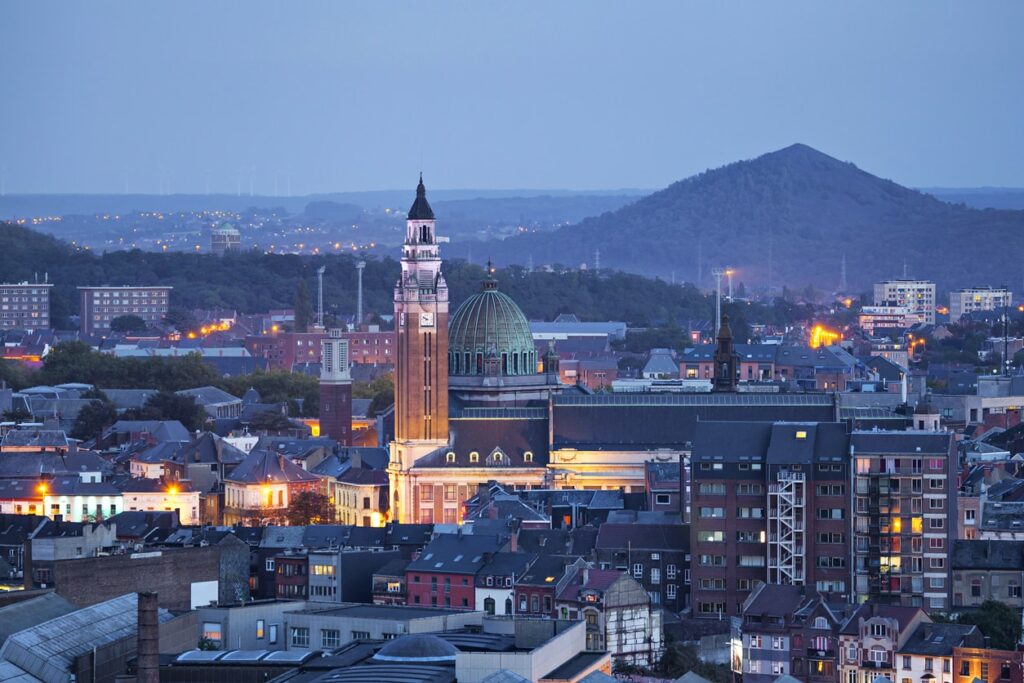Charleroi, Belgium: Unveiling the Hidden Gems of a Post-Industrial Gem

Introduction:
Charleroi, often overshadowed by its more prominent Belgian counterparts, unfolds as a city with a complex identity, shaped by its industrial past and a resilient spirit that strives for renewal. Situated in the Wallonia region, Charleroi stands as a testament to the transformative power of adaptation and the pursuit of cultural rejuvenation. In this extensive exploration, we delve into the multifaceted layers of Charleroi, from its industrial roots and architectural heritage to its artistic endeavors, culinary delights, and the dynamic urban dynamics that define this often-overlooked gem in Belgium.
Industrial Roots:
- The Golden Age of Industry:
- Charleroi experienced its golden age during the Industrial Revolution when coal mining and steel production fueled its economic growth. The city’s skyline bore witness to the towering blast furnaces and smokestacks that defined the era of heavy industry.
- Post-Industrial Transformation:
- As global economic shifts led to the decline of traditional industries in the latter half of the 20th century, Charleroi faced the challenges of post-industrialization. The city’s landscape underwent transformation, marking a period of economic and social adaptation.
Architectural Heritage:
- Art Deco Charleroi:
- Charleroi boasts an impressive array of Art Deco architecture, showcasing the city’s artistic and architectural heritage. Buildings like the former Coal Mine Headquarters and the Palais des Expositions exemplify the elegant and geometric motifs of the Art Deco movement.
- Bois du Cazier:
- Bois du Cazier, a former coal mine complex, bears witness to Charleroi’s industrial history. The site, now a museum and memorial, preserves the memory of the tragic 1956 mining disaster and serves as a poignant reminder of the city’s industrial past.
Cultural Renaissance:
- Photography Museum (Musée de la Photographie):
- The Photography Museum in Charleroi stands as a testament to the city’s commitment to cultural rejuvenation. The museum, housed in a former Carmelite monastery, celebrates the art of photography and hosts exhibitions that contribute to Charleroi’s evolving cultural landscape.
- Rockerill:
- Rockerill, a cultural venue and former industrial building, epitomizes Charleroi’s transformation from an industrial powerhouse to a hub of creativity. The space hosts concerts, art exhibitions, and cultural events, injecting a vibrant energy into the city’s cultural scene.
City of Street Art:
- The City of Murals:
- Charleroi has embraced street art as a form of urban expression, turning its walls into canvases that narrate stories of resilience and transformation. Renowned street artists have contributed to the city’s open-air art gallery, turning overlooked spaces into vibrant hubs of creativity.
- Abandoned Places Transformed:
- Abandoned industrial sites and factories have become playgrounds for street artists, turning forgotten spaces into dynamic showcases of contemporary art. Charleroi’s street art movement reflects the city’s determination to redefine its identity beyond its industrial past.
Culinary Delights:
- Rive Gauche:
- Rive Gauche, the cultural and commercial district along the Sambre River, has emerged as a culinary hub. The area’s diverse restaurants and cafes offer a gastronomic journey that mirrors Charleroi’s embrace of innovation and reinvention.
- Local Flavors and Craft Brews:
- Charleroi’s culinary scene celebrates local flavors and artisanal craftsmanship. From traditional Belgian dishes to innovative culinary creations, the city’s eateries and craft breweries contribute to the evolving palate of this post-industrial gem.
City of Festivals:
- Les Solidarités:
- Les Solidarités, an annual music and arts festival, transforms Charleroi into a vibrant celebration of culture and solidarity. The festival attracts diverse artists and audiences, embodying the city’s spirit of unity and cultural diversity.
- Festival Asphalte:
- Festival Asphalte focuses on urban culture, bringing together street artists, musicians, and cultural enthusiasts. The festival’s eclectic program reflects Charleroi’s dedication to embracing the contemporary and pushing artistic boundaries.
Green Spaces:
- Parc Reine Astrid:
- Parc Reine Astrid, a green oasis in the heart of Charleroi, offers respite from urban life. The park’s expansive lawns, walking paths, and scenic views provide a tranquil retreat for residents and visitors alike.
- The Hanging Gardens (Jardins Suspendus):
- The Hanging Gardens, perched on the slopes of Mont-sur-Marchienne, offer panoramic views of Charleroi. These terraced gardens showcase the city’s commitment to green spaces and provide a serene escape within an urban setting.
Challenges and Aspirations:
- Economic Revitalization:
- Charleroi continues to face economic challenges associated with post-industrialization. Efforts to diversify the local economy, attract innovative industries, and provide job opportunities are crucial for the city’s sustained revitalization.
- Preserving Industrial Heritage:
- Balancing the preservation of Charleroi’s industrial heritage with the need for urban development is an ongoing challenge. The city seeks to honor its past while creating a modern and sustainable urban environment for future generations.
Conclusion: Charleroi – A City in Renewal
Charleroi, Belgium, emerges as a city in renewal, where the echoes of industrial history harmonize with the vibrant rhythms of contemporary culture. From the murals that adorn its streets to the cultural venues that breathe life into abandoned spaces, Charleroi invites exploration and challenges preconceived notions. As the city navigates its path of reinvention, Charleroi stands as a testament to the resilience of communities and the transformative power of embracing change. In the heart of Wallonia, Charleroi beckons travelers to witness its ongoing evolution—a city that refuses to be defined solely by its past but instead embraces the promise of a dynamic and culturally rich future.




